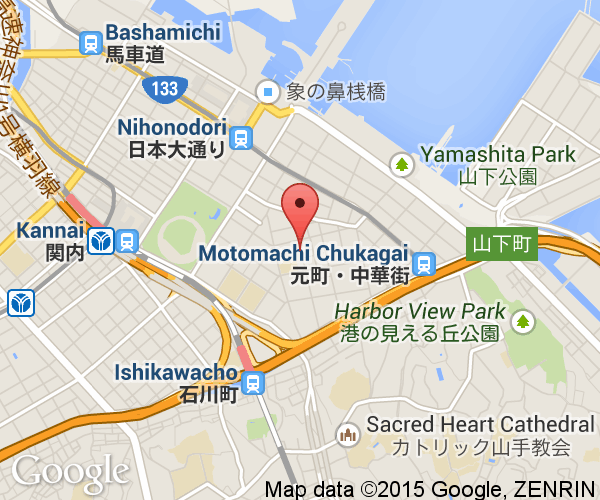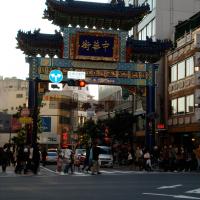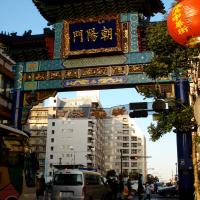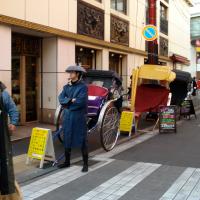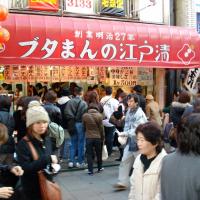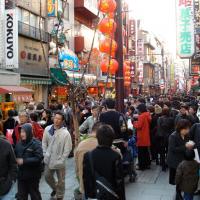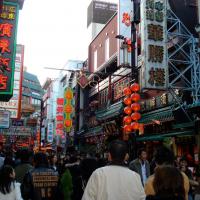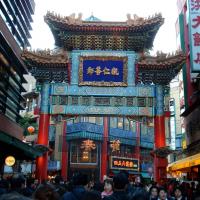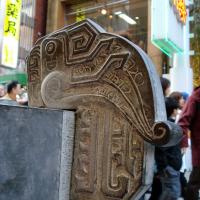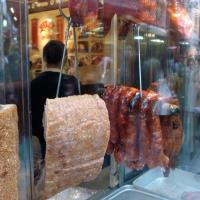Yokohama Seaside
Yokohama Chinatown
Yokohama's Chinatown (横浜中華街) is the largest of the top three Chinatowns in Japan. The other top Chinatowns of Japan are in Kobe and Nagasaki.
Starting in 1859, with the opening of Yokohama Port, Chinese and other nationalities came to trade and live in the new foreigner settlement. In one section, a school, meeting hall, temple, gate and other civic buildings were built by the growing Chinese population. This became the seed of a real community the grew into the modern Chinatown.
On any holiday, the area can become quite crowded with tourists from all over Japan and the world. Over 200 restaurants alone are located off the crowded streets of Chinatown. There are also many other shops selling Chinese goods. Be careful with your yen because many things in Chinatown are overpriced.
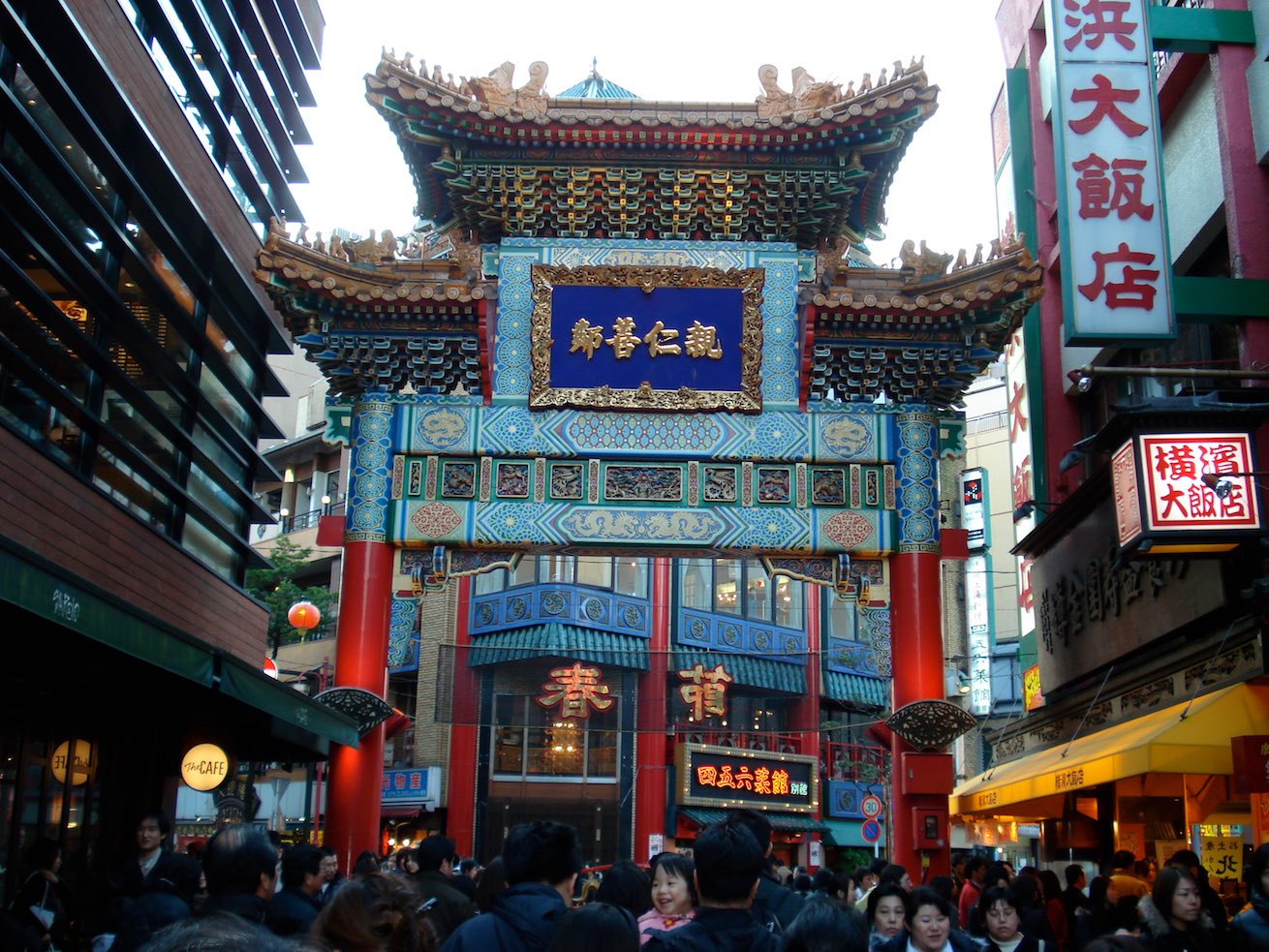
Attractions
China Star
Kyogeki, classical Chinese opera, is shown at this theater in Chinatown. You can also have your photo taken in traditional Chinese dress or in costume. Prices vary by performance but are generally around 3,500 yen. The theater is in the northwest section of Chinatown.
Gates of Chinatown
There are four highly ornamental gates that stand on each side of Chinatown. Each is dedicated to a different god and each is said to bring different kinds of good fortune to the community. There are many other gates inside Chinatown and these are related to the Chinese system of horoscopes.
Kantei-byo Temple
The Chinese temple, Kantei-byo, is in the heart of Chinatown. The temple is dedicated to the god of commerce and was originally constructed in 1873. It has been rebuilt 3 times since and the current temple was finished in 1990. The colorful temple is one of the best attractions in Chinatown.
Yoshimoto Aquarium of Fun
Yoshimoto Aquarium of Fun is and aquarium in the heart of Chinatown. It is divided into a regular aquarium with over 5,000 fish and a pre-school aquarium designed to delight young kids. Adults are 1,400 yen and children are 700 yen. Open 11:00 to 20:00.
Food
Besides the atmosphere, the biggest attraction is Yokohama-style Chinese food. Many of the restaurants have their own unique trademark dishes that they use to lure tourists and TV shows in. For example, its now trendy for stores to sell plate sized steamed buns.
Yokohama's Chinatown has plenty of products and foods in such quantities that set it apart from all other Chinatowns in Japan. It's one of the few places in Japan where bubble tea (flavored tea with tapioca balls) can be bought.
The best way to find the best steamed pork bun or most scrumptious restaurant is to simply explore. There is no shortage and a long queue is a sure sign the place is the trend of the month.

History
Yokohama Chinatown dates back to 1859 with the opening of Yokohama Port by Commander Perry and his black ships. Districts for foreign settlements were set up in all opened ports. As a result, many Chinese people came to live in this district of Yokohama. Civic buildings were built as a Chinese community formed quickly. In 1899, the abolishment of all segregated foreign quarters occurred. Instead of disbanding, Chinatown grew outwards.
The Great Kanto Earthquake of 1923 which devastated the region led to many Chinese people returning to China instead of rebuilding. There's no doubt that the political and social atmosphere in Japan encouraged their return greatly. The outbreak of war with China in 1937 lead to a period of decline and stagnation in Chinatown. The remaining Chinese could find little work. The war's end allowed prosperity to return to the district. Towards modern times, thawing relations with China and the reestablishment of diplomatic ties in 1972 have helped boost the image of China in Japan and invigorated the community.
Today, while there is still a sizable population of about 6,000 Chinese residents in the same section of Yokohama as the Chinatown, this is only approximately 40% of all foreigners in the same section.
Getting There
The underground Minato Mirai Line has the closest station to Yokohama's Chinatown. The Minato Mirai Line departs from JR Yokohama Station and Chinatown is the last stop (Motomachi-Chukagai Station). This line is actually an extension of the Tokyu Toyoko Line which goes to Shibuya (Limited express: 35 min. / 460 yen).
Ishikawacho Station on the JR Negishi Line is the closest train station to Chinatown. It is a 5 minute walk to Chinatown from the station.
Cheap 100 yen sightseeing buses run on a number of routes that follow along the water. A variety of different day passes can be bought for around or under 500 yen to travel around this area.
If you're looking for a scenic seaside walk then try walking along the seaside from JR Sakuragicho Station or Minato Mirai Station (Minato Mirai Line). First, follow the signs to the Nippon Maru (Yokohama Maritime Museum) and then follow the signs to Chinatown. It should take around 30-40 minutes. (See: Yokohama Seaside)
Posted: April 17, 2011 Updated: February 22, 2015
